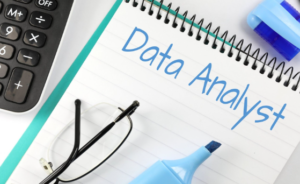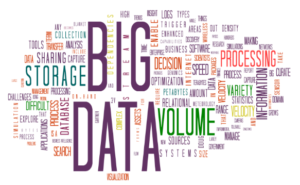What Tools and Skills Do I Need to Become a Data Analyst?
Today, the data analyst is essential to the data-centric organization. Companies, from startups to multinational conglomerates in every industry, need data analysts to take their raw data and turn it into meaningful, actionable insights used to make decisions and grow their businesses. If you’re considering a career as a data analyst, or you’re already in the field and want to gain some knowledge, skills, and tools to improve your work, this blog is for you. Let’s explore the basic tools and skills you need to be a successful data analyst.
Data analysts play a crucial role in today’s data-driven organizations. Companies of all sizes and industries, from startups to global giants, rely on them to transform raw data into valuable, actionable insights that drive decision-making and business growth. If you’re considering a career in data analysis or already working in the field and looking to enhance your skills and tools, this blog is for you. Let’s dive into the essential tools and skills you need to succeed as a data analyst.
1. Essential Technical Skills
Why They’re Important
Technical skills are vital for data analysts because they enable efficient data collection, cleaning, and analysis, allowing them to derive meaningful insights from complex datasets. Mastery of tools like SQL, Python, Excel, and data visualization software helps analysts process large amounts of data, identify patterns, and communicate findings effectively. These skills are crucial for solving business problems, making informed decisions, and driving strategic growth in data-driven organizations.
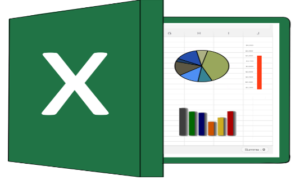
Key Technical Skills:
Excel: Excel is a software that helps you organize, calculate, and analyze data in tables made up of rows and columns. It’s often used for tasks like budgeting, tracking information, creating charts, and performing simple or complex math.
Structured Query Language (SQL): SQL (Structured Query Language) is a programming language used to manage and manipulate databases. SQL is the backbone of any data analyst. It allows you to query data, update, join tables, filter results, and organize large amounts of data, making it easy to find specific information or make changes to the data quickly.
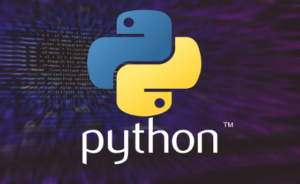
Python or R: Python and R are two programming languages most used for data analysis. Python is easy to code and used for most of the work that needs to be done on a day-to-day basis – data wrangling, statistical analysis and machine learning. R is a language that is generally used for statistical computing and data visualisation in both research and academic environments.
Data Visualisation Tools (Tableau and Power BI): Data visualization is a crucial skill for any data analyst, allowing you to present complex data in a simple, visual format. With these tools, you can create interactive dashboards, charts, and graphs that help stakeholders easily understand and interpret insights.
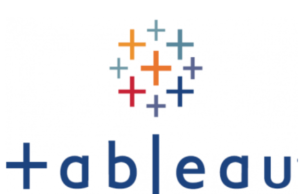

2. Analytical Thinking and Problem-Solving Skills
Why They’re Important
Analytical thinking and problem-solving skills are essential for data analysts because they allow them to break down complex data, identify patterns, and uncover insights. These skills help analysts approach challenges methodically, find effective solutions, and make informed decisions that drive business improvements. By thinking critically, analysts can turn raw data into actionable insights that address real-world problems.
Key Analytical Skills:
Critical Thinking: The ability to think critically about data is important. It involves questioning the data, understanding the questions being asked, and comparing it to the available information. By thinking critically, you can avoid biases and ensure you’re working with accurate information that applies to the problem you’re solving.
Problem Solving: As a data analyst, you’ll likely tackle multiple business problems daily. Strong problem-solving skills help you take a structured approach to these challenges. For instance, you must identify the key problems, break them down into manageable parts, and pinpoint the right data to create an effective strategy for solving them.
Attention to Detail: Presentation is important. When you focus on accuracy, you catch small details that make a big impact. You can ensure your data is clean, your calculations are correct, and your conclusions are accurate. This attention to detail helps you avoid errors and build credibility.
3. Knowledge of Data Management and Cleaning
Why It’s Important
Knowledge of data management and cleaning is important because raw data is often messy, incomplete, or inconsistent. Proper data cleaning ensures that the data is accurate, reliable, and ready for analysis. Effective data management helps organize and store data efficiently, making it easier to access and analyze. Without these skills, errors in the data can lead to incorrect conclusions, poor decision-making, and unreliable results. Clean, well-managed data is the foundation of any successful analysis.
Key Data Management Skills:
Data Cleaning: Raw data often contains errors, duplicates, missing values, and inconsistencies. Data cleaning fixes these issues, ensuring the dataset is accurate and ready for analysis. Without a proper data-cleaning process, errors in the data can lead to misleading conclusions.
Data Transformation: You may need to transform data before it’s ready for analysis, such as by normalizing it, changing data types, or aggregating it at different levels. Understanding data transformation helps researchers prepare data properly for accurate analysis.
Database Management: Familiarity with database management systems (DBMS) such as MySQL, PostgreSQL, or Microsoft SQL server is essential. This knowledge will enable you to create, retrieve, and manage information in large datasets in an organized and secure manner that maintains data integrity.
4. Understanding of Statistical Analysis
Why It’s Important
Statistical analysis is important because it helps data analysts make sense of complex data by identifying trends, relationships, and patterns. It allows them to draw meaningful conclusions, make predictions, and support data-driven decisions. By applying statistical methods, analysts can assess the reliability and significance of their findings, helping organizations reduce uncertainty and make informed choices. Without statistical analysis, it would be difficult to turn raw data into actionable insights.
Key Statistical Skills:
Descriptive Statistics: Descriptive statistics summarize a dataset, providing a quick way to understand its shape. They help you grasp the distribution and central tendency of the data. Common examples include the mean, median, mode, standard deviation, and variance.
Inferential Statistics: Inferential statistics allow you to make predictions about a population based on a sample of data. This is crucial because you can’t always analyze an entire population directly. Without inferential statistics, even the best data would be meaningless for drawing valid conclusions. Techniques like hypothesis testing, confidence intervals, and regression analysis help you analyze relationships between variables and make data-driven decisions.
Probability: Probability forms the foundation of statistical inference. By understanding key probability concepts, you can assess the likelihood of events and the accuracy of predictions based on data. Whether you’re working in finance, the stock market, healthcare, or risk management—any field that deals with large datasets—having a solid grasp of probability is essential for making informed decisions.
5. Communication and Data Presentation Skills
Why They’re Important
Communication and data presentation skills are important because they help you explain your findings clearly to others, especially those who may not understand the technical details. When you present data well, it becomes easier for people to see the key insights and make informed decisions. These skills ensure your analysis is understood and acted on, making your work more valuable to the organization.
Key Communication Skills:
Data Storytelling: Telling a good story with data through clear presentations and visualizations helps explain the numbers and their connection to business goals. This approach persuades stakeholders and inspires them to make informed decisions.
Presentation Skills: You will frequently be presenting your findings to non-technical audiences. You must be careful whether your findings in a way that will be easily digestible to your audience. Also, the use of charts, graphs, and dashboards will help to tell the story clearly.
Writing Reports: Data analysts must also write descriptive reports that document their findings, in addition to giving verbal presentations. Clear and concise writing is crucial for producing reports that effectively communicate insights and are easy for the audience to understand.
6. Familiarity with Big Data Tools
Why It’s Important
Big data tools are important because they help manage, process, and analyze vast amounts of data that traditional tools can’t handle. These tools allow analysts to efficiently go through large datasets, uncover patterns, and generate insights that drive informed business decisions. As data continues to grow in volume and complexity, big data tools are essential for staying competitive and making data-driven choices in real-time.

Key Big Data Tools:
Hadoop: Hadoop is an open-source framework used to store and process large amounts of data across multiple computers. It allows for the handling of big data by distributing tasks and storing data in a scalable, efficient way.
Apache Spark: Apache Spark is an open-source, fast, and powerful data processing engine used for big data analytics. It can handle large datasets quickly by processing data in memory, making it ideal for tasks like machine learning, real-time data processing, and batch processing.
NoSQL Databases (e.g. MongoDB, Cassandra): NoSQL (non-SQL) databases are used for unstructured data and can scale horizontally to handle high volumes of data. It is essential to work with big data, such as e-commerce, social media, and the IoT.
7. Continuous Learning and Adaptability
Why They’re Important
There are always going to be new tools, new techniques, and new technologies that emerge, so you will either have to learn a new tool or adopt a new approach. Being a data analyst means committing to a life of learning and continually adapting to change.
Key Strategies for Continuous Learning:
Keep Up With Industry Trends: Stay updated on the latest trends in data analysis by reading industry blogs, watching webinars, and attending conferences. You can also take online courses and certifications in data analysis, programming, machine learning, and more through platforms like Coursera, Udemy, edX, and so on.
Play with New Tools: It’s okay to experiment with tools and technologies you’re not familiar with. You might have heard about machine learning frameworks or visualization platforms but aren’t sure how they fit into your role. Exploring them can help you discover new ways to enhance your work.
Conclusion
To be an effective data analyst, you need a mix of technical skills, analytical thinking, and communication abilities. Start by learning essential tools like Excel for spreadsheets, SQL for database queries, Python for programming, and Tableau for data visualization. Develop problem-solving and statistical analysis skills to frame questions, analyze data, and share results. Stay flexible and committed to continuous learning. Mastering these tools and skills will enhance your data analysis career and make you a valuable asset to any organization, whether you’re just starting out or looking to advance in your career.

